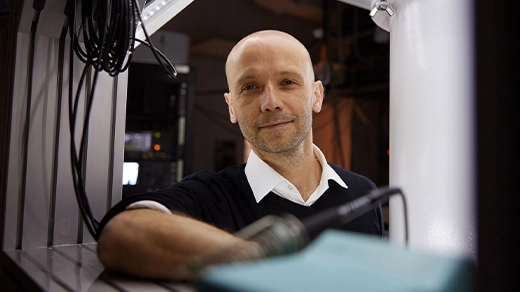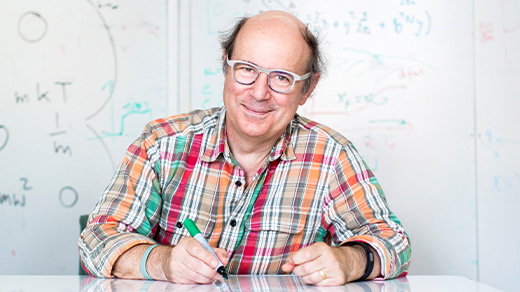What's up in
Axions
Latest Articles
He Seeks Mystery Magnetic Fields With His Quantum Compass
Alex Sushkov is updating an old technology with new quantum tricks in hopes of sensing the magnetic influence of dark matter.
What Is the Nature of Time?
Time is all around us: in the language we use, in the memories we revisit and in our predictions of the future. But what exactly is it? The physicist and Nobel laureate Frank Wilczek joins Steve Strogatz to discuss the fundamental hallmarks of time.
In a Monster Star’s Light, a Hint of Darkness
Astronomers are scouring the cosmos for fingerprints of the invisible — tiny clumps of pure dark matter that might solve a long-standing cosmic mystery.
Brightest-Ever Space Explosion Reveals Possible Hints of Dark Matter
A recent gamma-ray burst known as the BOAT — “brightest of all time” — appears to have produced a high-energy particle that shouldn’t exist. For some, dark matter provides the explanation.
A Hint of Dark Matter Sends Physicists Looking to the Skies
After a search of neutron stars finds preliminary evidence for hypothetical dark matter particles called axions, astrophysicists are devising new ways to spot them.
Frank Wilczek on the Strong Force, Quarks and Dark Matter
The theoretical physicist Frank Wilczek explained what holds atomic nuclei together, and he is still pushing at the limits of what the standard model can tell us.
A Prodigy Who Cracked Open the Cosmos
Frank Wilczek has been at the forefront of theoretical physics for the past 50 years. He talks about winning the Nobel Prize for work he did as a student, his solution to the dark matter problem, and the God of a scientist.
Dark Matter Experiment Finds Unexplained Signal
Researchers say there are three possible explanations for the anomalous data. One is mundane. Two would revolutionize physics.
Axions Would Solve Another Major Problem in Physics
In a new paper, physicists argue that hypothetical particles called axions could explain why the universe isn’t empty.








